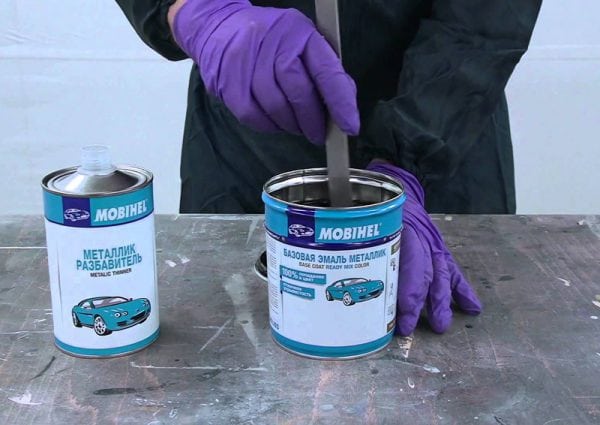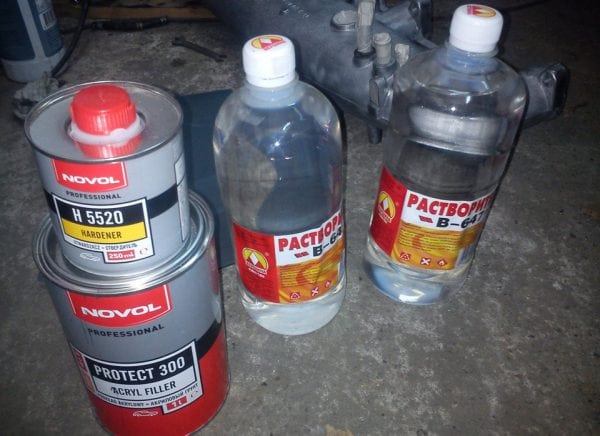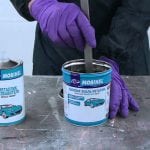Metallic is a rather capricious paint that requires compliance with many rules. Most often, the composition is used to paint body parts of a car or motorcycle. This is due to the aesthetic properties of the material. After application to the surface, the paint gives a metallic sheen and a reflective coating.

The properties
Metallic differs from ordinary paint in the presence of aluminum powder in the composition. In general, it is an auto enamel containing a binder, a pigment, a solvent and small particles of metal. The presence of such components allows not only to give the necessary shade of the structure, but also creates the effect of a metal shimmering in the sun. However, achieving the correct results is quite difficult. It is necessary to apply the paint in a uniform layer, otherwise spots and smudges will appear during operation.
Metallic paint less corrosion than other materials. Over time, the composition does not lose operational properties and is not exposed to external factors. True violation of the integrity of the coating leads to the gradual destruction of the material.
to contents ↑Due to the high thermal conductivity of the metal contained in the composition, the paint does not overheat when exposed to sunlight and does not fade. The cost of such paint is higher than that of simple enamels, however, it justifies the money spent.
Dilution technique
The most important parameter when diluting paint is viscosity. The quality of the coating will depend on how correctly you choose the viscosity of the composition. Too thick material will not allow to fill all small pores and roughnesses, and it is impossible to get rid of them even with careful surface treatment.
Now many ready-made enamels are sold. They are already diluted and ready to use. Nevertheless, even using the factory composition, it is necessary to dilute it with a solvent for better application to the surface of the structure. It will also provide quick drying and additional protection against corrosion.
All solvents are divided into three groups depending on the speed of evaporation. For each climate, a special solvent is required. It depends on what the coating will be after drying. The main types are:
- fast - used in low temperature conditions;
- slow - suitable for work in hot weather;
- universal - are used under any conditions.
Painting of surfaces is carried out by a spray gun, therefore it is necessary to choose the density with which the equipment can handle. The main parameter that you need to pay attention to when working is temperature. Spreading and drying of the paint is completely dependent on this indicator. At the moment, there are many diluents produced specifically for work at different temperatures. Unlike solvents, they are more expensive, but more effective.
It is not recommended to determine the amount of diluent per eye.Mixing should be carried out in small portions and after each time measure their content in the paint. Therefore, inexperienced people are better to use universal solvents that are suitable for any temperature conditions.
On each can of paint, the manufacturer indicates the correct ratio of solvent to composition. The first step is to adhere to the recommended parameters. However, depending on the date of manufacture and the type of solvent chosen, the mixture does not always produce the required consistency. Therefore, it is worthwhile to conduct several experiments with small portions of materials.

Recommendations
The most common solvent to paint ratio is 1/1. Those. you need to add as much thinner as paint. However, the correct painting directly depends on the method of applying the composition to the surface.
The first layer is recommended to be “dry”. For such a layer, it is necessary to dilute 2 parts of the paint and 1 part of the solvent. Thus, you will protect the structure from defects. The surface will become more even, which will ensure a more uniform application.
After 15-20 minutes of waiting, a second coat is applied. Apply a basic ratio of 1/1 and thickly cover the surface of the part from the spray gun. He will not block the primer and will have a matte finish. After complete drying, the last layer is applied with the same ratio, but more finely.
After painting, it is necessary to cover the surface with varnish with the addition of a solvent to achieve a shine. When the composition dries, polish the surface and you will achieve the desired effect.





